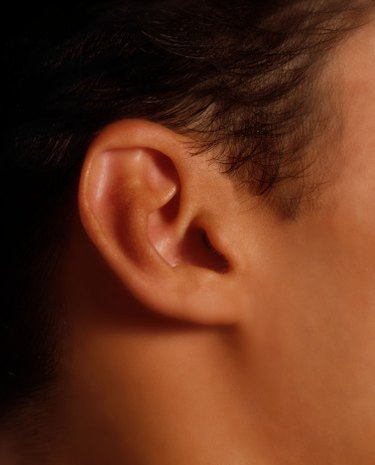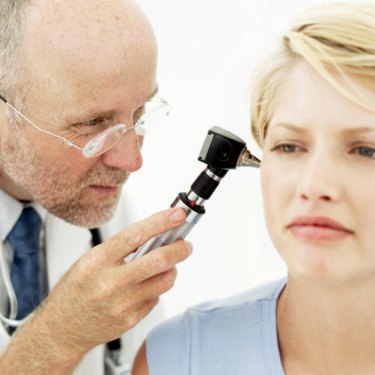
A burst ear drum from trauma, infection or rapid change in pressure is painful and debilitating. Right after a perforation, the middle ear needs time to rebuild tissue and, if infection is present, medication is also required. Certain head positions and movements need to be avoided. A gradual return to weight training will go a long way toward a safe workout and avoiding more ear problems.
Anatomy
Video of the Day
The ear is roughly defined as three sections. The external ear is the part visible on the side of the head. The middle ear contains the eardrum, a membrane that separates the middle ear from the inner ear. The inner ear contains hair cells, called cilia, that convert vibrations from the eardrum into electrical signals sent to the hearing nerve. The cilia and nerves are delicate structures normally protected by the barrier of the eardrum.
Video of the Day
Treatment

If the eardrum has been perforated, seek medical advice. If infection or damage to the cilia or nerves occurs, you may suffer hearing loss. The doctor will advise you how long to lay off weight training while the eardrum heals. This can take weeks if medication is prescribed for an infection. With the permission of your doctor, return to a workout routine gradually.
Exercise
Weightlifting with a perforated eardrum that is still healing should be at moderate intensity. Do not raise blood pressure too high as it affects pressure in the healing part of the membrane. Higher reps during each set with lower weight is a suitable protocol to follow. For example, bench press at 65 percent of your one-repetition maximum in three sets of 12 repetitions.
Blood Pressure
Be careful to keep the head at level with the heart or above; to avoid increased blood flow to the ear, do not drop the head below the heart. Perform dead lifts Romanian style, bent 90 degrees at the waist with the neck spine straight and neutral; do not drop the head toward the knees. Abdominal work in a captain's chair performing leg raises is preferable to lying on the floor for crunches.
Swimming
Do not swim in the pool or open water until the doctor says it is OK. This may take up to six months. The same goes for the steam room, hot tub or sauna at the gym. Failure to follow your doctor's orders may result in an increased risk of loss of hearing.